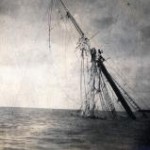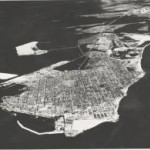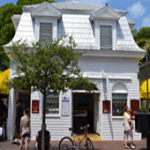Downtown
United Methodist Church
Methodist preaching was first heard on the island in 1832 when two missionaries arrived by schooner. The Methodist Episcopal Church, South, was formed in 1845 making the Old Stone Church the oldest Methodist Church in Southeast Florida. The church structure is made of coral rock quarried from the site and was built to cover their semi-permanent wooden sanctuary. Upon the completion the old church was dismantled and carried out the front door. Over the years, four Methodist congregations united to form the foundation of the current church.
Wreckers
For over a century the Florida Keys reaped the rewards of shipwrecked vessels on its 200 miles of reefs and shoals. In the early 1800s there was a shipwreck a week. During the 1830s, nearly 60-90 percent of all exports from Florida came from wrecking. The use of “false lights†to lure ships onto a reef is a popular fable. In reality an unidentified light in the night represents land or a maritime danger to be avoided.
Cayo Hueso
Key West got its name from a combination of cultures and languages. Early Spanish explorers named the island “cayo hueso†which translates to English as “bone islandâ€. The Tiano Indians of Cuba call a small island “cayoâ€. The English call it “cay†and the American Colonists called it “key. “Huesoâ€, pronounced “waysoâ€, came from the large deposits of bone found on the island. The Spanish also called the island “oeste†referring to our westerly location. The American interpretation of the words became “Key Westâ€.
Bishop Albert Kee Statue
Sometimes, an individual is chosen for recognition because they exemplify a tradition. Bishop Albert Kee, along with three generations of his family (and numerous individuals from Bahama Village) stood on this corner selling fresh conch, fish and conch shells for more than half a century. Community donations and funds from the City of Key West helped produce the life-like bronze statue commemoration in 2015. The commissioned artist was Tom Joris from Bahama Village and the American Bronze Foundry.
Mansard Roof
This mansard roof, also referred to as a French roof, was popularized by the French architect, Francois Mansart, during the 1600s. Primarily designed to shed snow loads and avoid French property tax, it became popular in the 1850s throughout the U.S. and Canada in an architectural movement known as “Second Empire Style.†Mansard roofing in Key West can be attributed to the international influences of the city’s diverse population in the nineteenth century.




